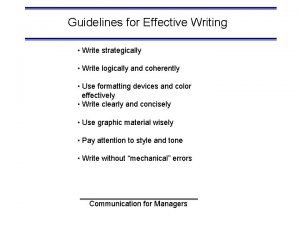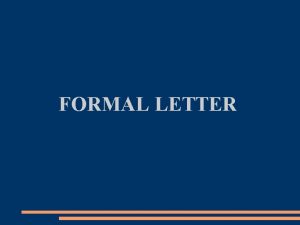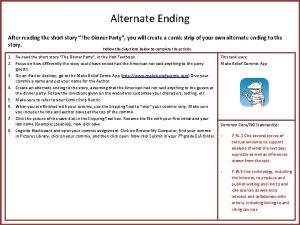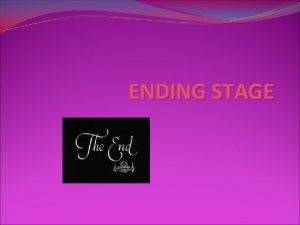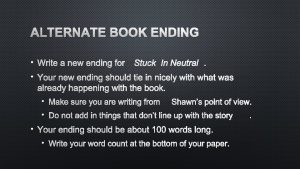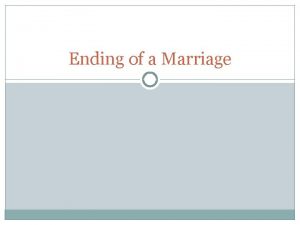Ending a Communication Guidelines for Writing an Ending










- Slides: 10

Ending a Communication � Guidelines for Writing an Ending for a Communication

Ending a Communication � Readers expect certain kinds of endings, and it is your task as a writer to satisfy these expectations. Also, ending technical communications is important because 1. an ending is a place of emphasis, 2. an ending creates your readers’ final impression of your communication, and 3. an ending provides a transition.

1. Stop After Your Last Point � Sometimes you need to end your communications without doing anything special at all--as in the case of instructions and recommendation reports. In these cases, simply end directly after making your last point.

2. Repeat Your Main Point � Because the end of a technical communication is a point of emphasis, you can use it to focus your readers’ attention on the points you want to be foremost in their minds as they finish reading.

3. Summarize Your Key Points � In summarizing, you are aiming to ensure that your audience has understood the general thrust of your communication. One strategy is to summarize the key points that you have made.

4. Refer to a Earlier Stated Goal � Because many technical documents begin by stating a goal and then proposing ways to achieve it, one may end a communication by referring to that goal, thereby reminding your readers of the goal and sharpening the focus of your communication.

5. Focus on a Key Feeling � In this case, focus your readers’ attention on a feeling rather than a fact--such as telling your readers that they can trust you and your services.

6. More Information and Assistance � A common strategy for ending technical communications is to tell your readers how to get assistance or more information.

7. What to Do Next � Another strategy for effective endings is to tell you readers’ what you think should be done next--i. e. , what are the available courses of action.

8. Further Study � Another way to end technical communications is to tell readers what needs to be studies or researched next.
 Effective writing style
Effective writing style What is the formal letter
What is the formal letter Order literature review
Order literature review How to write an alternate ending to a short story
How to write an alternate ending to a short story Iso 22301 utbildning
Iso 22301 utbildning Typiska novell drag
Typiska novell drag Tack för att ni lyssnade bild
Tack för att ni lyssnade bild Vad står k.r.å.k.a.n för
Vad står k.r.å.k.a.n för Varför kallas perioden 1918-1939 för mellankrigstiden
Varför kallas perioden 1918-1939 för mellankrigstiden En lathund för arbete med kontinuitetshantering
En lathund för arbete med kontinuitetshantering Underlag för särskild löneskatt på pensionskostnader
Underlag för särskild löneskatt på pensionskostnader
